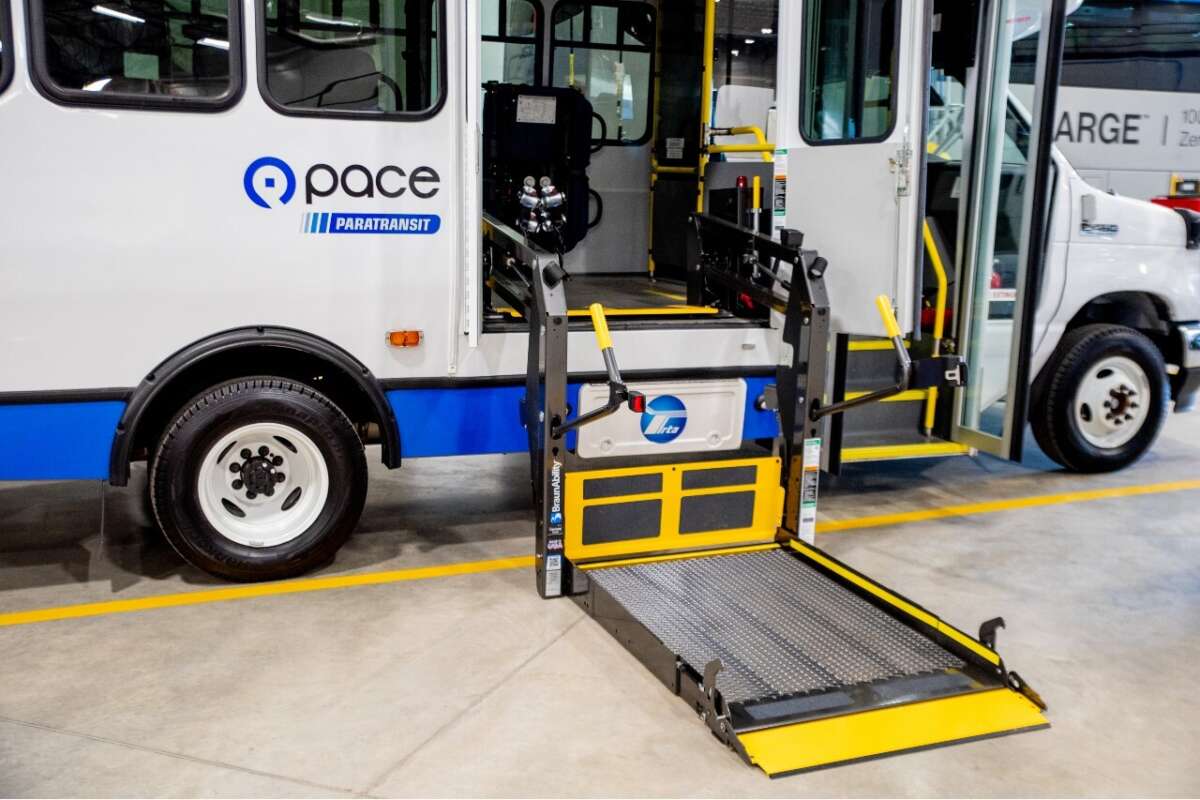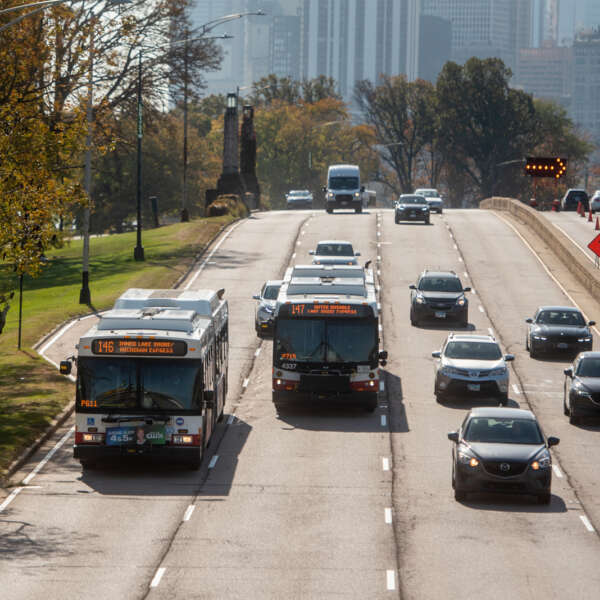33 years with the ADA: How Paratransit provides opportunities and independence to people with disabilities
July 25, 2023
July 25, 2023

Thirty-three years ago on July 26, 1990, the Americans with Disabilities Act (ADA) was signed into law. Under the ADA, public transportation systems must be accessible to people with disabilities. When a passenger with a disability is not able to use the fixed-route system—in Chicago’s case, buses and trains—the ADA mandates that transit systems provide complementary Paratransit service, or ADA Paratransit.
ADA Paratransit is a shared ride, advanced reservation, origin-to-destination transportation service for individuals who, because of their disability, are unable to use fixed-route transit service for some or all of their trip. The RTA handles ADA Paratransit Certification for the entire Chicago region, and Pace operates ADA Paratransit service.
For many in our region with disabilities that prevent them from using fixed-route transit, ADA Paratransit has been a lifeline. Carol Ruffalo, whose husband Richard Ruffalo was a longtime ADA Paratransit rider, said the service gave him a life. Richard came down with a disease called Lewy body dementia when he was 48, impacting both his mind and his body. For over 10 years until he passed away at 60, he and Carol rode Paratransit together at least once a week to the doctor, the dentist, and, at least once a month, to the Chicago Botanic Gardens.
“It was so wonderful to be able to have Pace,” Carol said. “Without them, he wouldn’t have been able to go anywhere, he would never have come out. I gave him a life, a real good life. Between Pace and what I did for him, we kept him alive.”
Horacio Esparza, Executive Director of Progress Center, has been riding ADA Paratransit for nearly 30 years. Progress Center is one of 22 Centers for Independent Living in Illinois. It serves Suburban Cook County, working to provide people with all types of disabilities the tools and resources to be independent in their own communities. Esparza credits Paratransit for his ability to work and earn a living that supports his family.
“I was always depending on my wife or someone to take me wherever I needed or wanted to go,” Esparza said. “But I wanted to work, and I wanted to go places by myself. I’m pretty sure I missed many opportunities because the people who could give me a ride were not available when I needed one. But with Paratransit, I started being interviewed for jobs, I started volunteering, I started going to restaurants by myself, the movies, anywhere. There were no limitations on my independence. If I wouldn’t have known about Paratransit, it would have been impossible to be where I’m at.”
While access to ADA Paratransit is life-changing for individuals with disabilities, Esparza continues to advocate for needed improvements to the service. Paratransit operators across the country are facing staffing shortages, much like fixed-route transit systems. These shortages can result in longer rides, Esparza said, taking up precious time that could be spent with his family.
The RTA, CTA, Metra, and Pace are all working to make the regional transit system more accessible, including innovations to Pace’s Paratransit service. Currently, approximately 76 percent of stations on the Metra system and 70 percent of stations on the CTA rail system are fully accessible. More funding and service innovations are needed to remove barriers and improve the transit experience for everyone. Recent projects advancing these goals include:
The RTA’s regional transit strategic plan Transit is the Answer renews the RTA and Service Boards’ commitment to a transit system that works better for everyone through its Action Agenda. Stakeholder working groups recommended establishing a dedicated funding source for capital projects addressing ADA improvements. In the near term, the RTA will lead the development of a regional accessibility improvements plan that builds on existing Service Board plans. This new comprehensive plan will provide a full catalog of capital projects that prioritize investment and identify funding sources to achieve full system accessibility.
Integrating accessibility considerations into regular planning processes can be just as important as dedicated programs and funding. During development of the strategic plan, stakeholders and the public had opportunities to weigh in on the capital priorities for the region. The Priority Projects Technical Working Group, made up of experts from CTA, Metra, Pace, and the Chicago Metropolitan Agency for Planning (CMAP), considered this input and identified 12 new themes for evaluating capital projects as they are added to the regional program in future budgeting processes. Accessibility for people with disabilities was included as one of the agreed upon evaluation themes, and performance metrics have been developed to ensure that accessibility is prioritized in the capital program moving forward.
Subscribe to our Newsletter
Related Articles
 One year in, Access Pilot Program makes transit more affordable, encourages ridership growth
One year in, Access Pilot Program makes transit more affordable, encourages ridership growth
This month the RTA, Metra, and Cook County are celebrating one year of success for the Access Pilot Program, which provides reduced fares on the entire Metra...
February 20, 2025 How to use transit to celebrate Black History Month in the Chicago region
How to use transit to celebrate Black History Month in the Chicago region
Black History Month celebrates the rich cultural heritage, achievements, and diversity that are an integral part of our country, but often overlooked or supp...
January 27, 2025 How to use transit to get to the 2025 Chicago Auto Show
How to use transit to get to the 2025 Chicago Auto Show
The Chicago Auto Show is the largest auto show in North America and one of the biggest annual events in the Chicago region. While it’s great fun to admire th...
January 27, 2025 How to use transit to celebrate the holidays in the Chicago region
How to use transit to celebrate the holidays in the Chicago region
Whether you’re looking to shop at holiday markets, attend festive performances, or take in all the sights the region has to offer, riding transit is the best...
November 18, 2024 How to use transit to get to Chicago area concert venues
How to use transit to get to Chicago area concert venues
As the birthplace of house and gospel music and a seedbed of blues and modern jazz, Chicago has always boasted a strong musical heritage. Today’s music scene...
November 7, 2024 How to use transit to enjoy fall in the Chicago region
How to use transit to enjoy fall in the Chicago region
Instead of mourning another Chicagoland summer come and gone, start creating your plans to make the most of fall. The RTA has curated a list of indoor and ou...
October 17, 2024